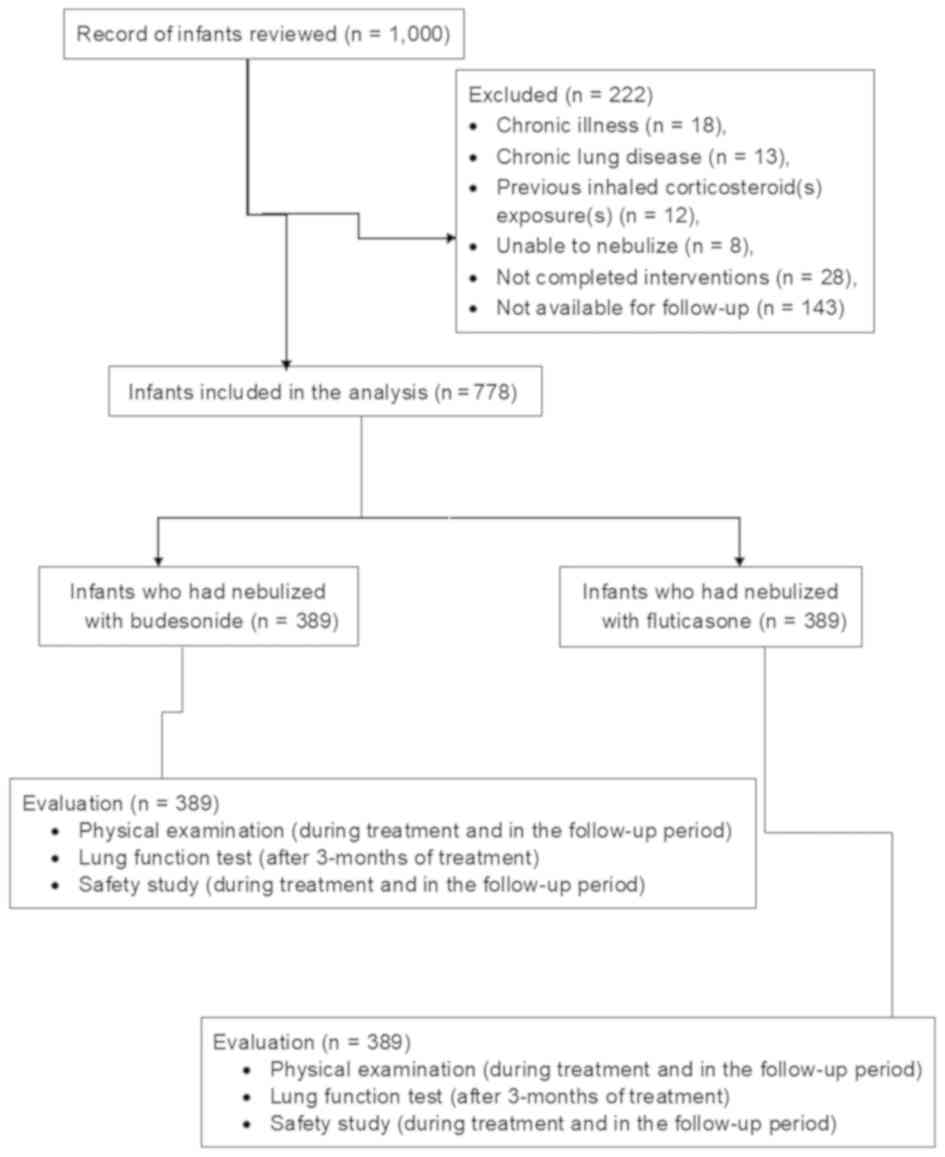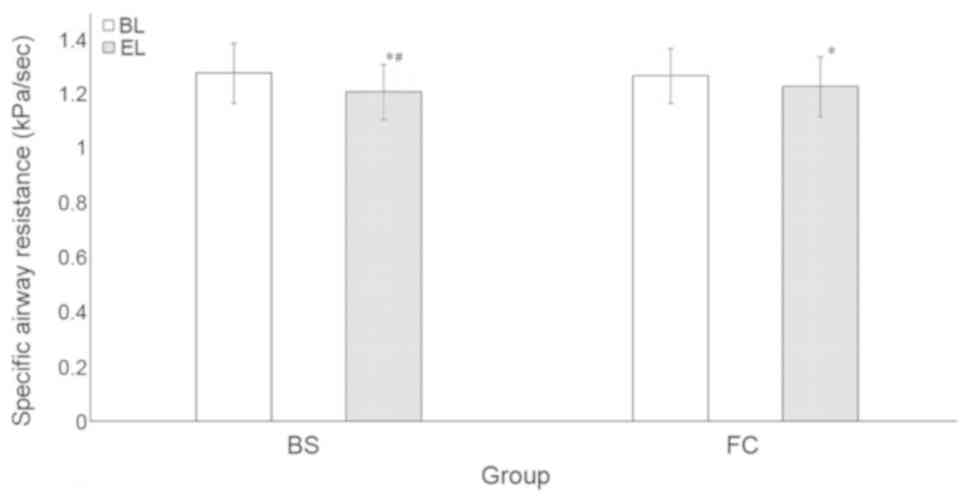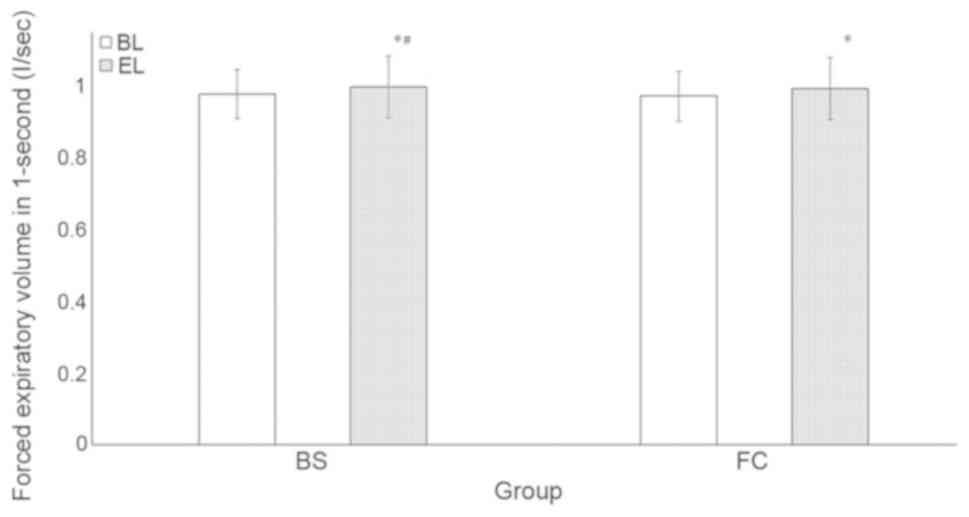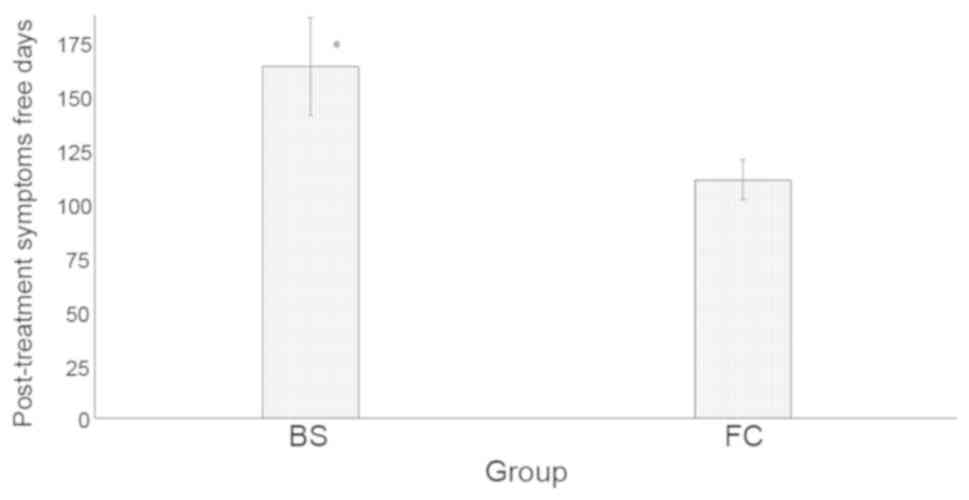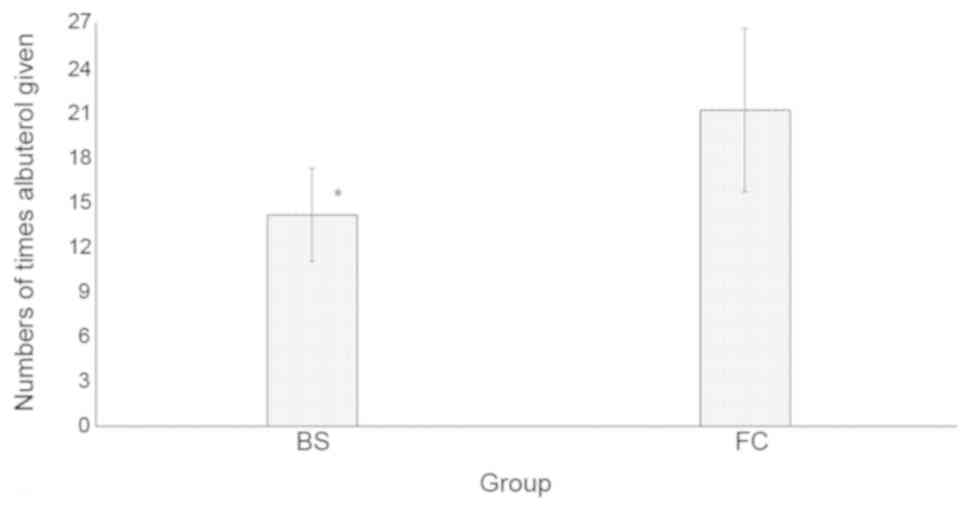|
1
|
Sears MR: Lung function decline in asthma.
Eur Respir J. 30:411–413. 2007. View Article : Google Scholar : PubMed/NCBI
|
|
2
|
Yoshihara S: Early intervention for
infantile and childhood asthma. Expert Rev Clin Immunol. 6:247–255.
2010. View Article : Google Scholar : PubMed/NCBI
|
|
3
|
Murray CS, Woodcock A, Langley SJ, Morris
J and Custovic A; IFWIN study team, : Secondary prevention of
asthma by the use of Inhaled Fluticasone propionate in Wheezy
INfants (IFWIN): Double-blind, randomised, controlled study.
Lancet. 368:754–762. 2006. View Article : Google Scholar : PubMed/NCBI
|
|
4
|
Martinez FD: Inhaled corticosteroids and
asthma prevention. Lancet. 368:708–710. 2006. View Article : Google Scholar : PubMed/NCBI
|
|
5
|
Zhou X, Hong J, Cheng H, Xie J, Yang J,
Chen Q, He S, Li Y, Zhou X and Li C: Budesonide suspension
nebulization treatment in Chinese pediatric patients with cough
variant asthma: A multi-center observational study. J Asthma.
53:532–537. 2016. View Article : Google Scholar : PubMed/NCBI
|
|
6
|
Boulet LP, FitzGerald JM and Reddel HK:
The revised 2014 GINA strategy report: Opportunities for change.
Curr Opin Pulm Med. 21:1–7. 2015. View Article : Google Scholar : PubMed/NCBI
|
|
7
|
Merkus PJ and de Jongste JC: Inhaled
corticosteroids in wheezy infants. Am J Respir Crit Care Med.
172:1058–1059. 2005. View Article : Google Scholar : PubMed/NCBI
|
|
8
|
Pelaia G, Vatrella A, Busceti MT, Fabiano
F, Terracciano R, Matera MG and Maselli R: Molecular and cellular
mechanisms underlying the therapeutic effects of budesonide in
asthma. Pulm Pharmacol Ther. 40:15–21. 2016. View Article : Google Scholar : PubMed/NCBI
|
|
9
|
Melani AS: Nebulized corticosteroids in
asthma and COPD. An Italian appraisal. Respir Care. 57:1161–1174.
2012. View Article : Google Scholar : PubMed/NCBI
|
|
10
|
Teper AM, Kofman CD, Szulman GA,
Vidaurreta SM and Maffey AF: Fluticasone improves pulmonary
function in children under 2 years old with risk factors for
asthma. Am J Respir Crit Care Med. 171:587–590. 2005. View Article : Google Scholar : PubMed/NCBI
|
|
11
|
De Benedictis FM, Del Giudice MM, Vetrella
M, Tressanti F, Tronci A, Testi R and Dasic G; Flic12 Study Group,
: Nebulized fluticasone propionate vs. budesonide as adjunctive
treatment in children with asthma exacerbation. J Asthma.
42:331–336. 2005. View Article : Google Scholar : PubMed/NCBI
|
|
12
|
Saddi V, Beggs S, Bennetts B, Harrison J,
Hime N, Kapur N, Lipsett J, Nogee LM, Phu A, Suresh S, et al:
Childhood interstitial lung diseases in immunocompetent children in
Australia and New Zealand: A decade's experience. Orphanet J Rare
Dis. 12:1332017. View Article : Google Scholar : PubMed/NCBI
|
|
13
|
Urbankowski T and Przybyłowski T: Methods
of airway resistance assessment. Pneumonol Alergol Pol. 84:134–141.
2016. View Article : Google Scholar : PubMed/NCBI
|
|
14
|
Lai SH, Liao SL, Yao TC, Tsai MH, Hua MC,
Chiu CY, Yeh KW and Huang JL: Raised-volume forced expiratory
flow-volume curve in healthy Taiwanese infants. Sci Rep.
7:63142017. View Article : Google Scholar : PubMed/NCBI
|
|
15
|
Burman J, Lukkarinen H, Elenius V, Remes
S, Kuusela T and Jartti T: Eucapnic voluntary hyperventilation test
in children. Clin Physiol Funct Imaging. 38:718–720. 2018.
View Article : Google Scholar : PubMed/NCBI
|
|
16
|
American Thoracic Society; European
Respiratory Society, . ATS/ERS statement: Raised volume forced
expirations in infants: Guidelines for current practice. Am J
Respir Crit Care Med. 172:1463–1471. 2005. View Article : Google Scholar : PubMed/NCBI
|
|
17
|
Cetinkaya F, Kayiran P, Memioglu N, Tarim
OF, Eren N and Erdem E: Effects of nebulized corticosteroids
therapy on hypothalamic-pituitary-adrenal axis in young children
with recurrent or persistent wheeze. Pediatr Allergy Immunol.
19:773–776. 2008. View Article : Google Scholar : PubMed/NCBI
|
|
18
|
Zou YX, Zhang J, Ma C, Li J, Zai J and Guo
YS: Clinical efficacy of montelukast sodium in treating infantile
wheezing. Eur Rev Med Pharmacol Sci. 18:775–780. 2014.PubMed/NCBI
|
|
19
|
Saito M, Kikuchi Y, Kawarai Lefor A and
Hoshina M: High-dose nebulized budesonide is effective for mild
asthma exacerbations in children under 3 years of age. Eur Ann
Allergy Clin Immunol. 49:22–27. 2017.PubMed/NCBI
|
|
20
|
Rachelefsky G: Inhaled corticosteroids and
asthma control in children: Assessing impairment and risk.
Pediatrics. 123:353–366. 2009. View Article : Google Scholar : PubMed/NCBI
|
|
21
|
Rank MA, Johnson R, Branda M, Herrin J,
van Houten H, Gionfriddo MR and Shah ND: Long-term outcomes after
stepping down asthma controller medications: A claims-based,
time-to-event analysis. Chest. 148:630–639. 2015. View Article : Google Scholar : PubMed/NCBI
|
|
22
|
Bafadhel M, Peterson S, De Blas MA,
Calverley PM, Rennard SI, Richter K and Fagerås M: Predictors of
exacerbation risk and response to budesonide in patients with
chronic obstructive pulmonary disease: A post-hoc analysis of three
randomised trials. Lancet Respir Med. 6:117–126. 2018. View Article : Google Scholar : PubMed/NCBI
|
|
23
|
Castillo JR, Peters SP and Busse WW:
Asthma exacerbations: Pathogenesis, prevention, and treatment. J
Allergy Clin Immunol Pract. 5:918–927. 2017. View Article : Google Scholar : PubMed/NCBI
|
|
24
|
Yeo SH, Aggarwal B, Shantakumar S,
Mulgirigama A and Daley-Yates P: Efficacy and safety of inhaled
corticosteroids relative to fluticasone propionate: A systematic
review of randomized controlled trials in asthma. Expert Rev Respir
Med. 11:763–778. 2017. View Article : Google Scholar : PubMed/NCBI
|
|
25
|
Daley-Yates PT: Inhaled corticosteroids:
Potency, dose equivalence and therapeutic index. Br J Clin
Pharmacol. 80:372–380. 2015. View Article : Google Scholar : PubMed/NCBI
|
|
26
|
Bai TR, Vonk JM, Postma DS and Boezen HM:
Severe exacerbations predict excess lung function decline in
asthma. Eur Respir J. 30:452–456. 2007. View Article : Google Scholar : PubMed/NCBI
|
|
27
|
Cortese S, Gatta A, Della Valle L,
Mangifesta R, Di Giampaolo L, Cavallucci E, Petrarca C, Paganelli R
and Di Gioacchino M: Fluticasone/formoterol association favors
long-lasting decrease in bronchial reactivity to methacholine and
weekly PEF variability. Int J Immunopathol Pharmacol. 29:769–774.
2016. View Article : Google Scholar : PubMed/NCBI
|















